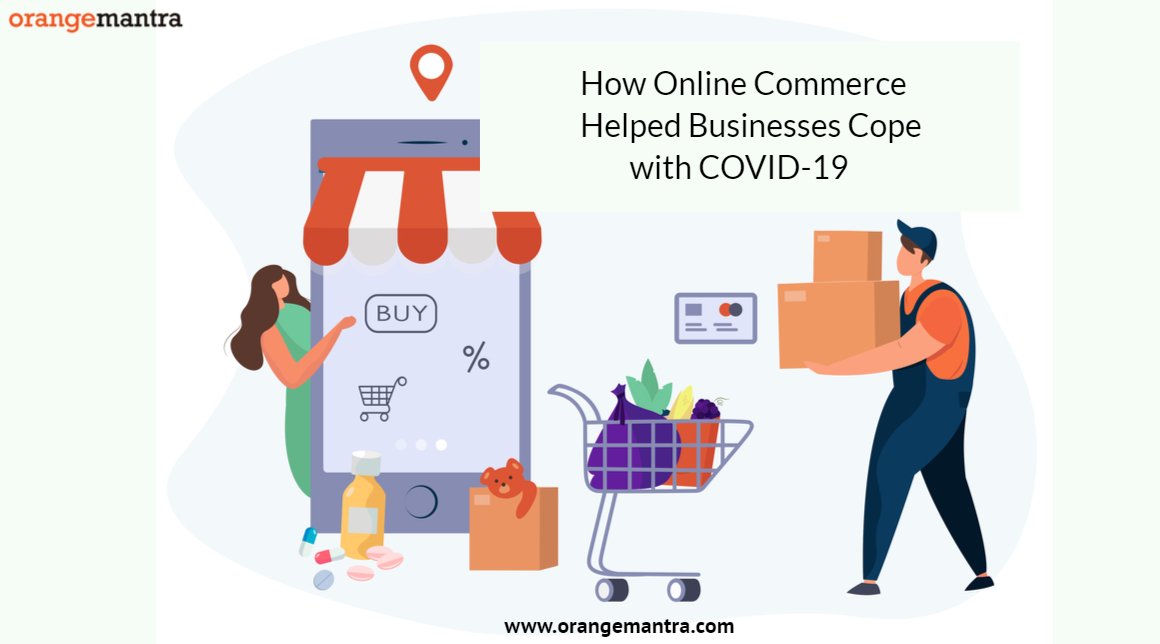
Here’s what you will learn:
The pandemic altered our shopping habits — like a gazillion other things. During the agonizing period of lockdowns, it felt essential for many of us to be able to buy almost anything from home. More and more consumers are getting goods delivered. And we’re buying more groceries, electronics, and exercise equipment as we spend less on restaurant meals and travel. And all of these have one thing in common: eCommerce.
As online shopping soared unprecedentedly, even Amazon struggled to keep up with the demands. The eCommerce behemoth launched an extraordinary recruitment spree, hiring a staggering 350,000 employees (according to The New York Times). Online commerce grew even further as holiday shopping went online in the U.S. and elsewhere.
Small, mid-sized, and large businesses alike rapidly implemented efficient eCommerce solutions to meet the overwhelming demand. For instance, holiday shopping strained the U.S. eCommerce industry with an estimated transit of three billion packages. Nonetheless, eCommerce grew exceptionally long before the holiday season. And the pandemic-induced growth of digital commerce has impacted virtually every domain of the industrial world.
Table of Contents
Online grocery shopping
During the home-stuck lives, consumers worldwide started to spend more money on groceries than any other type of goods. Supermarket chains and grocery stores saw years of sales growth in months. Despite facing a kind of kitchen fatigue, many consumers nurtured a new set of eating habits that involve more complex cooking. All these have driven an unprecedented surge in grocery shopping.
A significant number of consumers are using online grocery delivery apps instead of visiting a supermarket. Online grocery sales are growing extraordinarily in countries like India and the U.S. alike. For instance, online grocery sales in the U.S. hit $7.2 billion in June. In India, too, grocery delivery services saw massive growth early in the pandemic. Since March, new customer acquisition of grocery delivery service BigBasket grew three-fold (according to Economic Times). Amazon and Flipkart also saw a substantial rise in grocery orders.
Digital boom in retail
With the wave of lockdown sweeping physical markets, retailers small and large moved to digital commerce. Businesses that already had an online store raped up their solution or adopted migration to the cloud as a coping strategy. Although selling online is costlier than physical transactions, Digital Marketing Services has emerged as a savior. And with this growing emphasis on eCommerce solutions, businesses are more open than ever to embracing technology.
As malls and department stores reels under the crisis, retail giants like Levi’s were forced to go all-out digital. Be it food and beverage, FMCG, or fashion retail, businesses of all kinds adopted eCommerce website development or other measures to meet changing demands.
Fashion retail goes online
The fashion retail landscape saw a shape-shift as never before in the age of coronavirus. The offline business model had to go online —rapidly. Fashion retail sales will decline by around 35% in 2020 compared with the previous year, according to a report by the Boston Consulting Group. The pandemic hit the fashion retailers with minimal or no eCommerce operations the hardest. Many businesses adopted rapid eCommerce development to stay afloat in markets like India, the U.S., and France.
Analysts say that fashion’s worst quarter ever was also the industry’s best period of online sales. Luxury fashion brands reported eye-popping online sales numbers. For instance, Prada’s online sales doubled; Bottega Veneta’s sales tripled. Far fetch, a digital marketplace for luxury fashion vendors, saw a 60% growth in traffic during the second quarter of the year.
However, this shift to digital didn’t originate in 2020. The pandemic only accelerated a trend that was already underway. Brick-and-mortar clothing stores were closing at an alarming rate even before the pandemic. The shift to online has helped fashion retailers to compliment the losses caused by physical store closures. And mainstream fashion retailers, too, have kept up with this trend. Gap, for example, said that its eCommerce businesses have doubled during the pandemic. At the same time, in-store sales declined by almost 50%.
Holiday shopping digitized
Holiday shopping prompted skyrocketing demands in the already straining eCommerce industry. As consumers went into a shopping frenzy, a flood of packages stacked up everywhere — from the U.S. to China. Demands surged for everything, ranging from household items to fashion accessories and more. Businesses equipped with advanced tools like Magento Commerce handled this surge better than those with less sophisticated technologies. The volumes of delivery requests reached a make-or-break level for many small businesses.
Since businesses were supposed to deliver the packages by Christmas, courier companies faced an overwhelming task. While businesses were under immense strain, they also didn’t want to appear incapable of meeting these demands. The retail industry’s future seemingly lies in digital commerce. And they didn’t want to create an unimpressive reputation among consumers and prospects. To mitigate overcapacity, some brands notified customers to place orders early and avoid delivery delays.
Wrapping up
Digital commerce is one of those phenomena that flourished immensely during the pandemic. Its growth was underway even before the global health crisis began. But the wave lockdowns helped make it a kind of panacea for business operations.
Small and large businesses alike became more open to embracing technology during the pandemic. And it enabled eCommerce solution providers to set in motion a new era of tech-driven business operations. At OrangeMantra, we have helped hundreds of businesses deal with the pandemic’s blow using custom eCommerce solutions. Our digital transformation expertise enables us to build suitable solutions for clients facing extraordinary challenges caused by COVID-19.
FAQs
Q. What is online grocery retailing?
Online grocery retailing enables grocery store owners to sell goods via an eCommerce website. Online grocery stores allow customers to order grocery items online and get delivery at their doorstep. Online grocery retailing can also be done through eCommerce mobile apps.
Q. What is Magento eCommerce?
Magento is a PHP-based eCommerce development platform. It provides online merchants with a flexible online store, and great control over the look, content, and functionality. Magento is mainly used by medium enterprises and large companies worldwide.
Q. How much does it cost to develop an eCommerce website?
The costs of building an eCommerce website vary widely, depending on your needs. If you need a simple online store with basic features and a storefront, costs are comparatively lower. OrangeMantra offers reliable eCommerce development at a competitive price.


